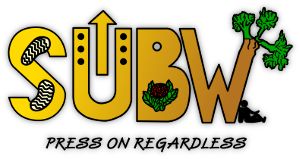Party: James Bevan, Tom Murtagh, Pete Harvey, Rachel Melrose.
After getting the taste for South West Tassie this time last year, a handful of curious bushwalkers flew down to the Natural State to do some more exploring. The idea was to traverse the Eastern Arthur Range and climb Federation Peak.
Day 1 – Scotts Peak Dam – Seven Mile Creek.
We walked through the lovely, muddy Arthur Plains from Scotts Peak Dam around lunchtime to Seven Mile Creek by Dinner, where we camped beside a beautiful pebbly bend.
Day 2 – Seven Mile Creek – Cracroft Crossing – Pass Creek – Luckmans Lead –
Stuarts Saddle.
In the morning Pete left early to go for a run up Kappa Moraine to the Western Arthur Range and Mt Scorpio, which is a really big day involving approx 1000m ascent and descent and then the return trip to Scotts Peak Dam by nightfall.
The rest of us started towards the Eastern Arthurs. We climbed the magnificent ridge, Luckmans Lead, to get onto the range. This was named after Leo Luckman who attempted to bag Federation Peak in 1947 but got turned back because of bad weather. The peak wasn’t climbed until 1949 – on a trip led by John Bechervaise—to reach the summit by what is now called the Bechervaise Gully, on the southeastern face.
Once on the range the vegetation changes dramatically, from swampy button grass plains to sub-alpine shrubs and alpine heath. The heath plants are just amazing, as many grow prostrate (across the ground) on exposed cliffs and peaks due to the extreme weather conditions they encounter.
We had awesome weather. On the Lead, and across the range, we had a clear view of Federation Peak.
Day 3 – Stuarts Saddle – Goon Moor – Hanging Lake.
After Camping at Stuarts Saddle, we woke up in a cloud of mist, and set off once Feder appeared as the sun burnt off a framed view of the Peak.
We crossed Goon Moor, a high alpine moorland covered in cushion plants and shrubs that like peaty soils. Being out in the open was great to get some of the bitey wind in our faces.
Negotiating the Four Peaks thereafter is interesting, as there is a bit of up and down rock scrambling and climbing over Pandani Palms and Scoparia. The grand opening to Hanging Lake lies between some large rock formations after ascending over Thwaites Plateau, another alpine moorland. Hanging Lake is the ideal campsite for an attempt on Federation – it is a Glacial Lake and has tent platforms to minimize impact of camping on the delicate cushion plants and alpine vegetation around the lake.
Once at Hanging Lake, we were pretty tuckered out and it was nearly sunset so we decided to go and eat and climb the Peak the next morning.
Day 4 – Federation Peak
A scud passed us over for a few hours the next morning pissing down rain. Dismay edges our thoughts; had we missed our chance? We needed an opening to climb the peak in good weather, so in the short breaks from rain we peered out of the tent at in the direction of the peak, but only saw white and grey expanse. We got hungry, and the scud pissed off so we got out of the tent to have lunch on little boulders by the lake. Then it became sunny!
The ascent was tricky but really good. The crux is a ledge, which James and Tom called the terror traverse, which must be negotiated above a 600m drop down to Lake Geeves below. The exposure is a little scary but without any wind we really enjoyed the climb. I noticed some heath plants that were not growing elsewhere, and they were in fact growing on the cliff we were climbing. Great stuff. Also, I saw a great many jumping spiders on the ascent – I wonder how they survive when it snows in winter?
The summit was very beautiful. It was calm, and there were only slight traces of cloud. The 360 degree view just silenced us. We could see many interesting peaks – Mt Picton, Mt Bobs, Precipitous Bluff, and Mt Anne. Also visible was the flooded Lake Pedder, Bathurst Harbour and our Lake, hanging Lake. We had company – we could see a few tiny humans way below dwarfed by the mountains. The Western Arthurs looked particularly spectacular, as we could see Mt Hesperus, Mt Sirius and Mt Capricorn, and the rest cutting jagged lines into the bronze horizon.
Some photos are available at http://acl.arts.usyd.edu.au/~murtagh/tasrand/southwest.html
—
Rachel T. Melrose
